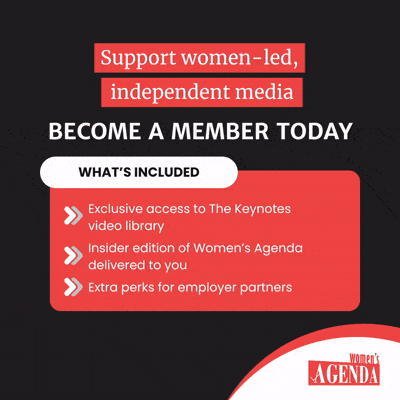Even so, the fact men dominated 97% of creative director positions in ad agencies made it seem a no-brainer to open the doors to my business in 2004 and create an agency that intentionally targets female audiences.
Not only did I become one of the “3 per centers” of female creative directors in advertising, but I also unknowingly joined another club: I was one of the teeny, tiny proportion of women agency owners to begin the entrepreneurial journey.
Since the explosion of data has hit the globe I can now, thankfully in 2018, show the scale, influence and different orientations of the female buyer.
There is hard data available now to back up pretty much every argument for developing female-centric marketing and communications strategies.
And research from the likes of McKinsey, Catalyst and the big consulting groups and many others also show how diversity makes a tangible difference – and especially at the top levels of business.
Despite a mountain of solid, empirical evidence that just keeps growing, the lack of diversity in advertising still for the most part exists, along with a stubborn resistance to do anything meaningful about it.
But I guess change is hard for big legacy businesses and industries.
Surely, it’s a different picture in the venture capital world? Where investors are on the lookout for new, disruptive opportunities to cash in on emerging social needs?
I naively thought so, until some recent exposure to the world of pitching and capital raising disavowed me of that misconception.
It turns out it’s not that different to the advertising industry. There’s money being spent building businesses. But those businesses don’t belong to women.
Globally, women receive less than 10% of VC funding. In 2017 they received just 2%.
Or look at the names of global agency groups out there – from the very beginnings of Madison Avenue – you won’t find an agency with one woman’s name on it.
Yes it’s good old bias at its best. And removing the potential for it has unearthed the fact it exists.
To eliminate the bias, blind recruitment is on the rise, though it had been trialled back in the 70s and 80s in orchestras where research had proved that this step alone makes it 50% more likely that a woman would advance to the finals.
In 2017, Tropfest decided to make entries to the short film festival gender blind. The results were extraordinary, with an unprecedented number of women making it onto the honour board of short film finalists. (To quantify this the proportion of female finalists increased from around 5 per cent to 50 per cent).
So there’s no need to join the dots for anyone.
We have collected the data proof points.
“Always talk the numbers” and “always go straight to the back of the deck” is the advice women who run agencies or have start-ups have been receiving when it comes to discussions on gender diversity. Don’t talk in “emotion” talk in “facts”.
Well the facts exist: Wealth and capital does not end up in the hands of women.
And that begs the question: if the numbers are so important – why is it that this set of numbers that unearth some incredibly compelling statistics are suddenly overlooked?
Below are five steps your business can take
Step 1: Create a high-level group of analysts from your business to look at all the numbers and breakdown all of the data points by gender. Both external data about industry norms and your own. If you see 50/50 split, great. If you see a majority swinging in either direction, then go to Step 2.
Step 2: How did you get to these percentages or proportions? What is the historic perspective? How do you compare to the same industry figures, as well as some adjacent or similar industries? It’s not a blame game – it’s about understanding the genesis, and fixing the pain points.
Step 3: Who needs to be trained, educated, coached and continuously inspired to make sure that the evolution from this point looks different? That the studies that show how gender diversity will benefit your company’s profitability ( i.e. more women in particular positions of leadership) are being acted upon and implemented.
Step 4: If you are training and offering leadership programs – how effective are they at uncovering biases and creating top-down transformation? Which programs are visionary, actionable and progressive, and which are token or box-ticking?
Step 5: Be the change – if only 2% of women are receiving funding it’s not a “women’s problem” it’s a culture problem. Own it. Know it. Change It. Bring in the experts to help you commit to this transformation and know they are not there to shame anyone. Just to help grow everyone.
Gender-intelligence entrepreneur Bec Brideson is driving innovation and exponential growth for business and brands with an overlooked market opportunity estimated to be worth $28T. Her foresight and new lens on business has seen her become a much sought-after speaker and consultant across most categories and industries worldwide. Visit her at becbrideson.com


